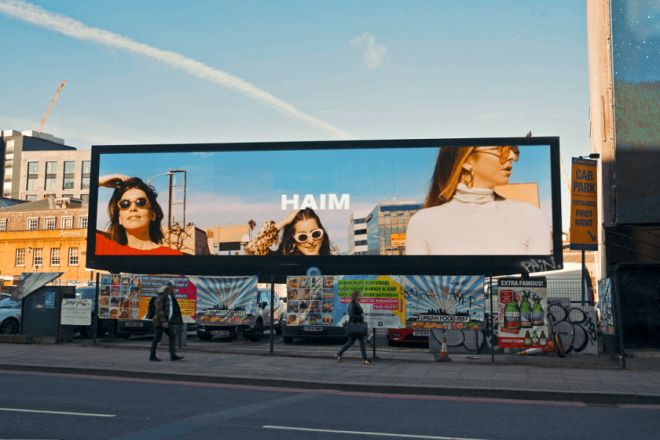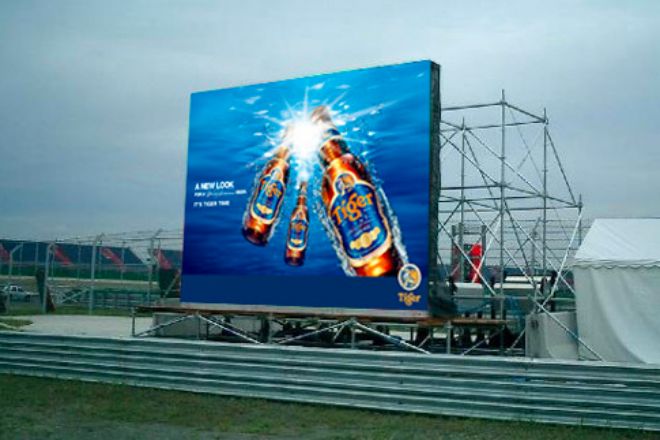소개

과학기술의 급속한 발전으로 인해, 발광 다이오드 표시 스크린 have been widely used in various fields of modern society, and their advantages include high brightness, high definition, and low power consumption.
From commercial advertising to urban transportation, from cultural entertainment to public information display, LED display screens are everywhere, greatly enriching our visual experience. However, with the increasing number of LED display screens, the light pollution problem they bring has become increasingly prominent.
Light pollution, as a new source of pollution in modern cities, not only affects people’s normal life and ecological environment but also poses a potential threat to human health. As one of the main sources of light pollution, the high brightness and inappropriate color matching of LED display screens often cause problems such as visual fatigue and decreased sleep quality.
Therefore, exploring the protective measures for LED display screens to prevent light pollution is not only of great practical significance but also an inevitable requirement for promoting the construction of green and sustainable cities.
1. Overview of light pollution of LED display screens
1). Definition and classification of light pollution
Definition: Light pollution generally refers to various lights that affect the natural environment, have adverse effects on normal human life, work, rest, and entertainment, damage people’s ability to observe objects, cause human discomfort, and damage human health.
Classification: Light pollution is mainly divided into white pollution, artificial daylight, color light pollution, glare pollution, radiation pollution, light flooding, visual monotony, visual occlusion, near-flash, etc.
2). Characteristics of light pollution of LED display screens
Glare caused by high brightness: The high brightness of LED display screens is particularly prominent at night, which makes it easy to form glare, causing interference to the vision of drivers and pedestrians and increasing the risk of traffic accidents.
Inappropriate color and contrast: Some LED display screens are too bright or dazzling in color and contrast settings, and long-term viewing will cause visual fatigue.
Excessive lighting at night: Some LED display screens still maintain high brightness at night, which not only causes energy waste but also affects people’s sleep quality.
3). Impact of light pollution on the environment and humans
Ecosystem destruction: Excessive light pollution will affect the biological clocks of animals and plants, interfere with their normal growth and reproduction, and may even lead to the extinction of some species.
Human health hazards: Light pollution may cause the body’s biological clock to be disordered, affect sleep quality, and may cause a series of health problems in the long run, such as neurasthenia and decreased vision.
Reduced sleep quality: Excessive light pollution at night can inhibit the secretion of melatonin in the human body, thereby affecting sleep quality and leading to problems such as fatigue and lack of concentration
Reduced visual comfort: Improper color and contrast settings, as well as glare caused by high brightness, can reduce people’s visual comfort, and long-term viewing may lead to visual fatigue.
4). Specific data and information:
According to a 2021 study, global light pollution has increased by at least 49% in the past 25 years. In some areas, this increase may be as high as 400%.
Monitoring of LED display screens in the central business district of a certain city showed that sampling points with a brightness exceeding 1000cd/m² accounted for 27% of the total. These high-brightness display screens are particularly prominent in the night environment, causing severe visual stimulation.
Over-illuminated LED display screens at night not only affect people’s vision but may also have a serious impact on the growth and development of surrounding habitats.
2. Technical measures for light pollution protection of LED display screens

1). Brightness and color management
- Automatic brightness adjustment system:
LED display screens should be equipped with a system that can automatically adjust the display brightness according to the ambient brightness. For example, the LED display screen of Tongpu Technology collects the ambient brightness in real-time and transmits the information to the central control room.
The central control room automatically calculates the most appropriate display output brightness based on the received data to avoid the light pollution problem caused by high brightness. According to research, when the brightness of the display screen exceeds 60% of the ambient brightness, the human eye will feel uncomfortable.
- 색상 보정 기술:
Use color correction technology to ensure the color accuracy and balance of the LED display screen to avoid overly bright or glaring color matching.
Color correction usually includes steps such as white balance adjustment, color saturation adjustment, and color uniformity correction to ensure that the screen can present a natural white at different grayscales and enhance or weaken the brightness of the screen display color to meet the color requirements of the human eye for different scenes.
- Night mode setting:
For night environments, LED displays should be set to night mode to reduce brightness and contrast and reduce interference to the surrounding environment and pedestrians. The setting of night mode should take into account the adaptability of the human eye and the lighting conditions at night to ensure that light pollution is reduced without affecting the display effect.
2). Optimization of materials and processes
- Use anti-reflective and anti-glare materials:
Select materials with anti-reflective and anti-glare properties to make LED display screens, reduce the reflection and scattering of light on the screen surface, and improve visual comfort. Anti-reflective and anti-glare materials can reduce light interference on the screen surface, making the image clearer and easier to watch.
- Improve the surface finish of the display screen:
Improving the surface finish of the display screen, reducing the diffuse reflection of light on the screen surface, and improving the clarity and contrast of the image. The screen surface with a high finish can reduce the scattering and loss of light, making the image sharper and the color more vivid.
- Improve the packaging technology of LED light sources:
Optimize the packaging technology of LED light sources, improve the luminous efficiency and stability of light sources, and reduce light leakage and waste. Advanced packaging technology can ensure that the light emitted by LED light sources is more concentrated and uniform, reducing the risk of light pollution.
3). Optical design improvement
- Reasonable design of LED light source distribution:
By reasonably designing the distribution and arrangement of LED light sources, ensure the uniform distribution and reasonable use of light on the screen. Reasonable light source distribution can avoid local over brightness or overdarkness, and improve the uniformity and clarity of the image.
- Adopt an anti-glare screen:
Apply anti-glare technology on LED display screens to reduce the impact of glare on viewers by reducing light reflection and scattering on the screen surface. Anti-glare screens can provide a better visual experience and reduce visual fatigue and discomfort.
- Optimize the viewing angle of the display screen:
Optimize the viewing angle design of the LED display screen to ensure clear image effects at different angles. Appropriate viewing angle design can reduce the leakage and reflection of light at the edge of the screen and reduce the risk of light pollution. At the same time, optimizing the viewing angle can also improve the comfort and satisfaction of viewers.
3. Management measures for light pollution protection of LED display screens
1). Policy, regulations, and standard formulation
- Formulate relevant regulations on light pollution of LED display screens:
The government should formulate clear regulations on light pollution of LED display screens and clearly define the standards for light pollution, the responsible parties, and the penalties for violations. This will help provide a legal basis for the rational use of LED display screens and regulate the market order.
- Establish light pollution emission standards:
For LED display screens of different types and regions, corresponding light pollution emission standards should be established. These standards should be based on scientific research and actual monitoring data to ensure that the brightness, color, and other parameters of LED display screens meet environmental protection requirements.
- Strengthen law enforcement:
Government departments should strengthen supervision and law enforcement of light pollution of LED display screens and deal with violations seriously. Ensure the compliance of LED display screens through a combination of regular inspections and random inspections.
2). Urban planning and layout
- Reasonable planning of the installation location of LED display screens:
In urban planning, the installation location of LED display screens should be fully considered to avoid setting up high-brightness and large-size display screens in sensitive areas such as residential areas, schools, and hospitals.
At the same time, it should be ensured that the installation location of the display screen is coordinated with the surrounding environment to reduce visual conflicts.
- Consider the lighting conditions of the surrounding environment:
When installing LED display screens, the lighting conditions of the surrounding environment should be fully considered. For example, in darker areas, the brightness of the display screen should be appropriately reduced; in brighter areas, the contrast of the display screen can be appropriately increased to ensure the clarity of the image.
- Limit the number and scale of display screens:
In busy areas such as urban central areas or traffic arteries, the number and scale of LED display screens should be limited to avoid excessive concentration and excessive use. Reduce the risk of light pollution by rationally planning and controlling the number and scale of display screens.
3). Operation management and maintenance
- Regularly check the brightness and color of the display screen:
The operating unit should regularly check and debug the brightness, color, and other parameters of the LED display screen to ensure that it meets the relevant standards and requirements for display screens that do not meet the standards, rectification, and adjustment should be carried out in a timely manner.
- Timely handle display screen failures:
For faulty LED display screens, the operating unit should handle and repair them in a timely manner to avoid light pollution problems caused by failures. At the same time, a sound fault handling mechanism should be established to ensure the normal operation of the display screen.
- Strengthen personnel training and improve management level:
The operating unit should strengthen the training and education of management personnel and maintenance personnel to improve their professional level and environmental awareness. Through training and education, they can better understand and implement relevant measures and requirements for light pollution protection.
4. Public education and participation in light pollution protection of LED display screens

1). Improve public awareness of light pollution.
- Carry out light pollution knowledge popularization activities:
Through organizing various lectures, exhibitions, workshops, etc., popularize the basic knowledge, hazards, and protective measures of light pollution to the public. These activities can be carried out in public places such as schools, communities, shopping malls, etc., to attract a wider audience.
- Strengthen media publicity and education:
Use television, radio, newspapers, the Internet, and other media platforms to regularly publish news, articles, and public service advertisements related to light pollution to increase the public’s attention and awareness of light pollution. At the same time, experts and scholars can be invited to write popular science articles to answer the public’s questions and confusion.
2). Encourage the public to participate in supervision.
- Establish a light pollution complaint and reporting mechanism:
Set up special complaint and reporting channels, such as hotlines, online platforms, etc., to facilitate the public to complain and report on the light pollution of LED display screens. For complaints and reports received, the relevant departments should investigate and handle them in a timely manner, and feedback on the results to the public.
- Strengthen communication and cooperation between communities and enterprises:
Encourage communities and enterprises to establish a communication and cooperation mechanism to jointly promote the protection of LED display screen light pollution. Enterprises can actively adopt the suggestions and opinions of the community, adjust the brightness, color, and other parameters of the display screen, and reduce the impact of light pollution.
At the same time, the community can also provide necessary support and help to enterprises to jointly maintain a good environmental order.
3). Promote environmental protection concepts and advocate green life
While promoting the protection of LED display screen light pollution, actively promote environmental protection concepts and green lifestyles. Advocate the public to save energy and reduce emissions, reduce unnecessary lighting, and use electronic products reasonably to reduce the overall level of light pollution.
By holding environmental protection-themed activities and publishing green living guides, we can improve the public’s environmental awareness and participation. At the same time, we can strengthen cooperation with environmental protection organizations, volunteer groups, etc., to jointly promote the development of environmental protection.
Through the implementation of the above measures, we can effectively improve the public’s awareness and participation in the problem of light pollution caused by LED display screens and form a good atmosphere of common concern and joint prevention and control in the whole society.
결론
Through the above discussion, it is not difficult to find that the protection of light pollution of LED display screens is a complex and urgent issue. It involves multiple aspects such as technology, management, and regulations, and requires the joint efforts of the government, enterprises, and all sectors of society.
마지막으로 LED 디스플레이 화면에 대해 더 알고 싶다면, 우리에게 연락해주세요.
